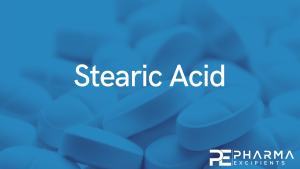Predicting pharmaceutical powder flow from microscopy images using deep learning

The powder flowability of active pharmaceutical ingredients and excipients is a key parameter in the manufacturing of solid dosage forms used to inform the choice of tabletting methods. Direct compression is the favoured tabletting method; however, it is only suitable for materials that do not show cohesive behaviour. For materials that are cohesive, processing methods before tabletting, such as granulation, are required. Flowability measurements require large quantities of materials, significant time and human investments and repeat testing due to a lack of reproducible results when taking experimental measurements. This process is particularly challenging during the early-stage development of a new formulation when the amount of material is limited.
To overcome these challenges, we present the use of deep learning methods to predict powder flow from images of pharmaceutical materials. We achieve 98.9% validation accuracy using images which by eye are impossible to extract meaningful particle or flowability information from. Using this approach, the need for experimental powder flow characterization is reduced as our models rely on images which are routinely captured as part of the powder size and shape characterization process. Using the imaging method recorded in this work, images can be captured with only 500 mg of material in just 1 hour.
This completely removes the additional 30 g of material and extra measurement time needed to carry out repeat testing for traditional flowability measurements. This data-driven approach can be better applied to early-stage drug development which is by nature a highly iterative process. By reducing the material demand and measurement times, new pharmaceutical products can be developed faster with less material, reducing the costs, limiting material waste and hence resulting in a more efficient, sustainable manufacturing process. This work aims to improve decision-making for manufacturing route selection, achieving the key goal for digital design of being able to better predict properties while minimizing the amount of material required and time to inform process selection during early-stage development.
Download the research paper as PDF:Predicting pharmaceutical powder flow from microscopy images using deep learning
or continue reading here on predicting pharmaceutical powder flow
List of materials
| Material | Supplier |
|---|---|
| 1-Octadecanol | Sigma-Aldrich |
| 4-Aminobenzoic acid | Sigma-Aldrich |
| Ac-Di-Sol | Dupont |
| Affinisol | Dupont |
| Cetyl alcohol | Sigma-Aldrich |
| Avicel PH-101 | Dupont |
| Azelaic acid | Sigma-Aldrich |
| Benecel K100M | Dupont |
| Caffeine | Sigma-Aldrich |
| Calcium carbonate | Sigma-Aldrich |
| Calcium phosphate dibasic | Sigma-Aldrich |
| Cellulose | Sigma-Aldrich |
| Cholic acid | Sigma-Aldrich |
| d-Glucose | Sigma-Aldrich |
| Dimethyl fumarate | Sigma-Aldrich |
| d-Sorbitol | Sigma-Aldrich |
| FastFlo 316 | Dupont |
| Granulac 230 | Meggle Pharma |
| HPMC | Sigma-Aldrich |
| Ibuprofen 50 | BASF |
| Ibuprofen 70 | Sigma-Aldrich |
| Lidocaine | Sigma-Aldrich |
| Lubritose mannitol | Kerry |
| Lubritose MCC | Kerry |
| Lubritose PB | Kerry |
| Magnesium stearate | Roquette |
| Magnesium stearate | Sigma-Aldrich |
| Mefenamic acid | Sigma-Aldrich |
| Methocel DC2 | Colorcon |
| Microcel MC-200 | Roquette |
| Mowiol 18-88 | Sigma-Aldrich |
| Paracetamol granular special | Sigma-Aldrich |
| Paracetamol powder | Sigma-Aldrich |
| Parteck 50 | Sigma-Aldrich |
| Pearlitol 100SD | Roquette |
| Pearlitol 200SD | Roquette |
| Phenylephedrine | Sigma-Aldrich |
| Pluronic F-127 | Sigma-Aldrich |
| Potassium chloride | Sigma-Aldrich |
| PVP | Sigma-Aldrich |
| S-Carboxymethyl-l-cysteine | Sigma-Aldrich |
| Sodium stearyl fumarate | Sigma-Aldrich |
| Soluplus | BASF |
| Span 60 | Sigma-Aldrich |
| Stearyl alcohol | Sigma-Aldrich |
Matthew R. Wilkinson, Laura Pereira Diaz, Antony D. Vassileiou, John A. Armstrong, Cameron J. Brown, Bernardo Castro-Dominguez and Alastair J. Florence
DOI: 10.1039/D2DD00123C , Digital Discovery, 2023, Advance Article
Read more on Stearic Acid as a pharmaceutical Excipient here:


